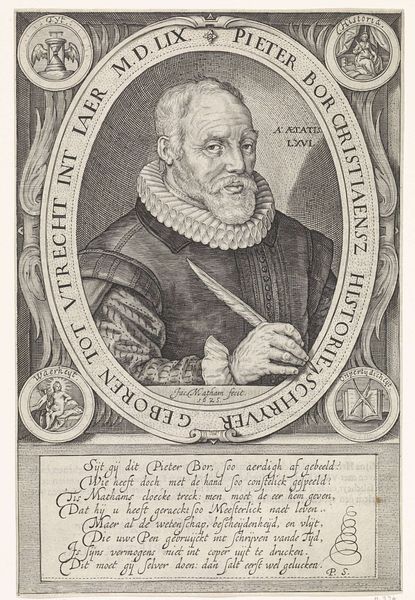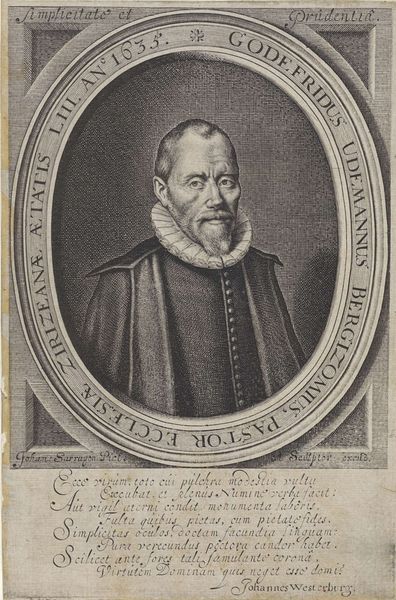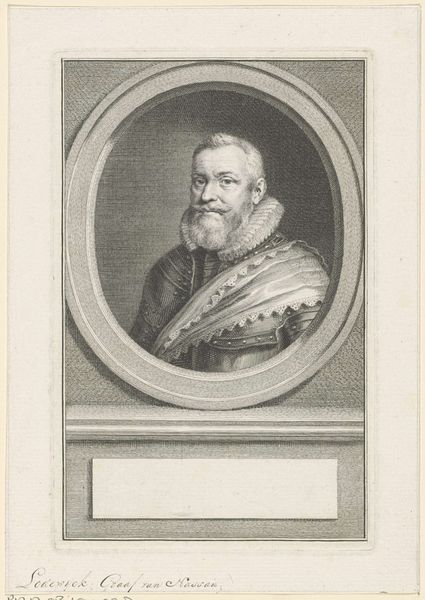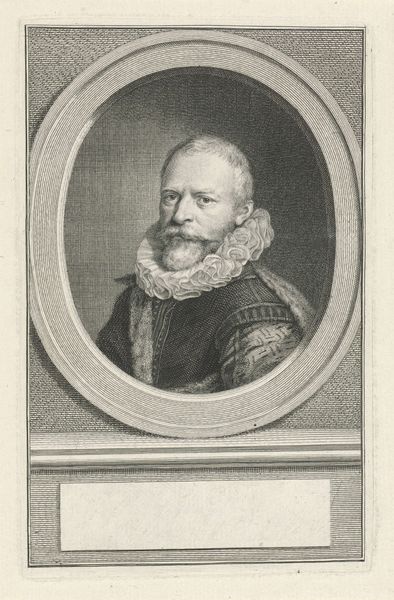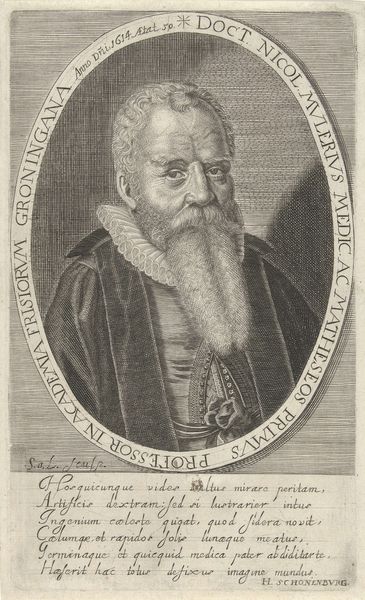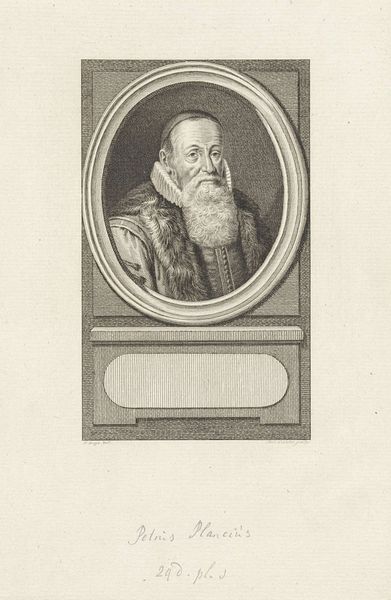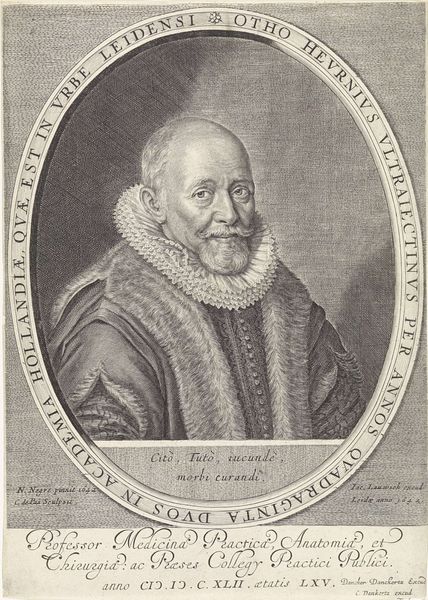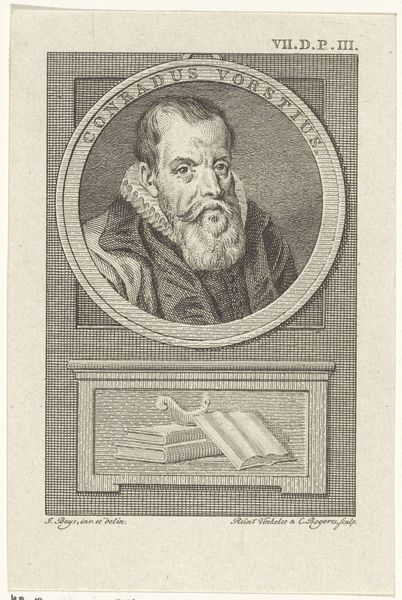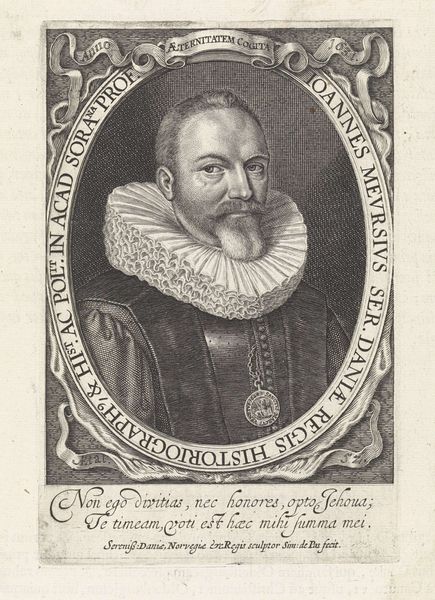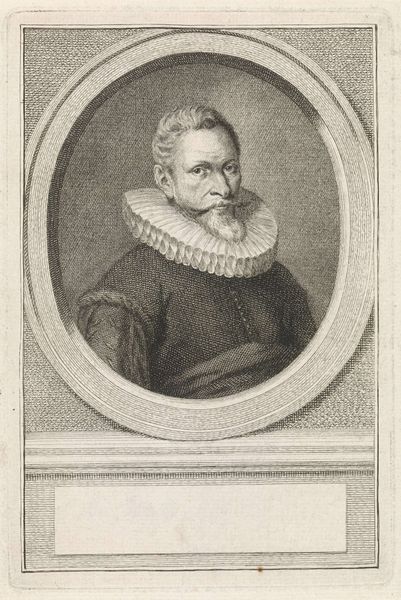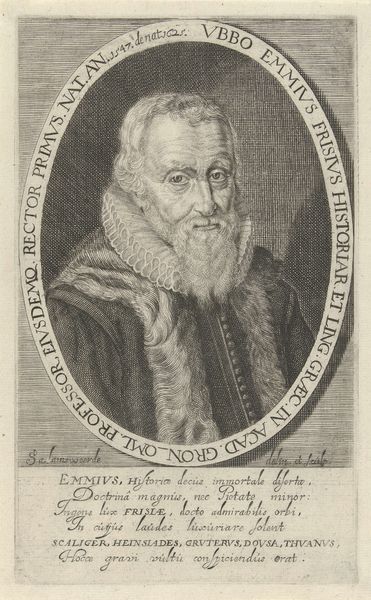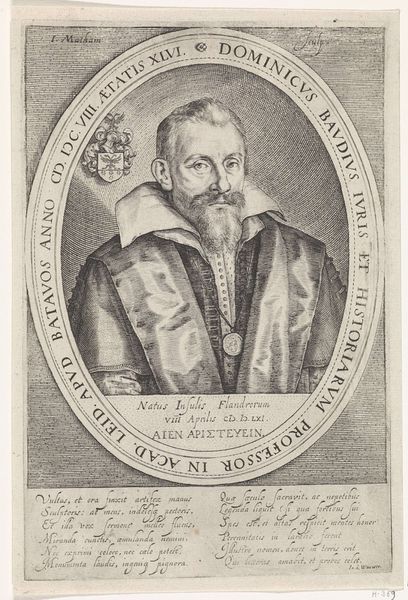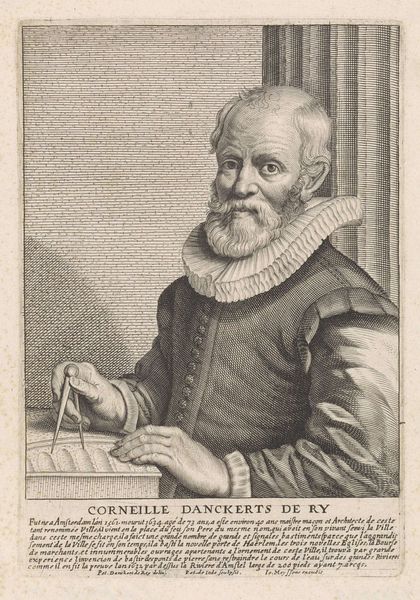
print, engraving
#
portrait
#
baroque
# print
#
book
#
history-painting
#
engraving
Dimensions: height 214 mm, width 150 mm
Copyright: Rijks Museum: Open Domain
Editor: This is Jonas Suyderhoef's "Portret van Theodorus Schrevelius," likely from sometime between 1623 and 1686. It's a print, an engraving. I'm struck by how the framing emphasizes the sitter's face, almost making him seem imposing despite the small book he holds. What draws your attention to this work? Curator: Immediately, I’m interested in how this print functions within the broader culture of portraiture at the time. These prints weren’t simply aesthetic objects; they served a vital role in constructing and disseminating the reputations of notable individuals. How does it participate in the social circulation of images? Schrevelius was a Rector – his status was intrinsically tied to knowledge production and pedagogy. The book acts not merely as a prop but a powerful symbol of his intellectual and social standing. Notice the Latin inscription around the portrait; how does the text reinforce his identity? Editor: So, the inscription almost acts like another frame, bolstering his reputation? Curator: Precisely. It is a carefully constructed image aimed at reinforcing Schrevelius’ authority within learned circles. The Baroque style contributes; that ornamentation would underscore status. Consider who this print was intended for, likely fellow scholars, students, and civic leaders. Do you think it portrays an accurate representation or an idealized image? Editor: Knowing it's an official portrait of sorts, I'd lean towards idealized. It makes me consider the power dynamics inherent in commissioning and distributing images like this. Curator: Absolutely. Suyderhoef, through his artistry, plays a part in shaping public perception and memory of Schrevelius. Now, the question arises, what aspects of Theodorus Schrevelius did those commissioners most wish to emphasize? Editor: I didn’t consider it from that angle before; thinking about how public perception is sculpted like that gives this image new weight. Thanks! Curator: It’s crucial to remember that art like this actively participated in shaping cultural values and reinforcing social hierarchies, even today in modern society. I've gained new insights as well. Thank you.
Comments
No comments
Be the first to comment and join the conversation on the ultimate creative platform.
